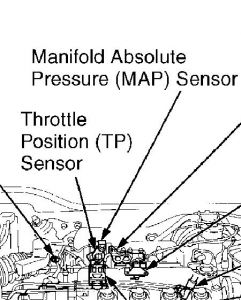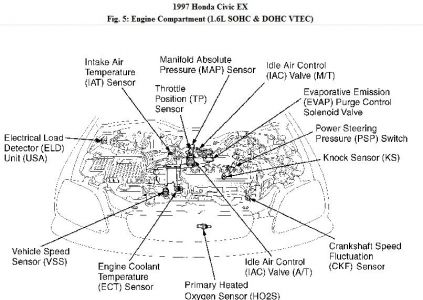Hey Kevin!
In this case your car uses a MAP sensor (Manifold Absolute Pressure)
a MAP sensor simply compares the pressure difference between 2 chambers. One chamber is sealed and used as the reference pressure (usually a vacuum) and the other chamber is connected to the intake manifold (usually by a vacuum hose). When the pressure in the intake manifold changes, this will change the voltage signal going back to the ecu from the MAP. A pressure drop will cause a voltage drop. This voltage is only interpreted as manifold pressure. The ecu will also need to use the signals from the rpm sensor and air temp sensor to calculate air mass, pressure alone is not enough. Plus any vacuum leaks on the hose, or indeed any other vacuum leaks on the manifold, will affect this sensor's signal.
After locating the MAP sensor, disconnect its wiring harness.
To test the MAP sensor, run jumper wires between its terminals and wiring harness per the service manual's instructions. Turn the ignition to the ON position and take a voltage reading. Spec for this MAP is about 4.5-5.0 volts.
With the engine running and warmed up, take another voltage reading. It should differ from the non-running number and fluctuate when the engine is revved. If not, verify that the vacuum line isn't damaged or blocked.
If the vacuum line checks out, the sensor is likely faulty. Replace the bad MAP with a new one by connecting the vacuum hose and wiring harness, then securing the sensor to its factory location.
I would check for vacuum leaks and check the sensor good.
________
Let me know how are you doing!
__________
Saturday, August 8th, 2020 AT 11:27 AM
(Merged)


